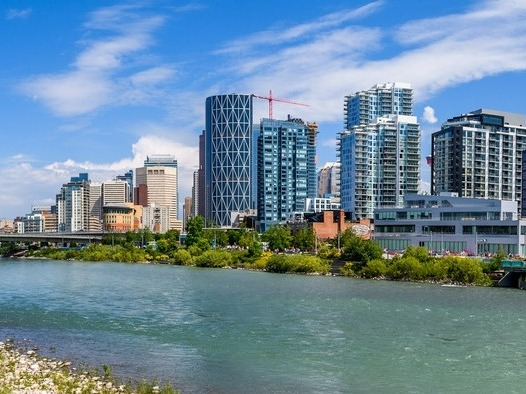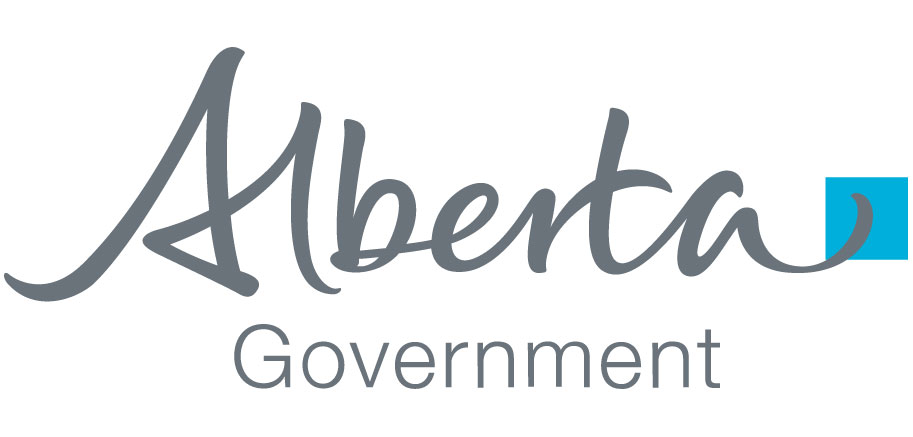Benefits
The Green Line will bring, transit, environmental, economic and growth benefits to Calgary.
The information on this page reflects the befefits for the original Phase 1 route from Shepard to Eau Claire. We are working to update the benefits for the revised route.
The Green Line is a long-term investment in Calgary's future.
The City of Calgary is regarded as one of North America’s best places to live, visit and do business. It is one of Canada’s largest cultural and economic centres and has undergone significant population and employment growth over the previous decades, with the population forecasted to double by 2076. Investment in public transit is essential to maintaining a high quality of life, a prosperous and competitive economic advantage and a sustainable environment.
Phase 1 of the Green Line LRT will bring many benefits to our city:
- Expand the Rapid Transit Network, increase ridership and reduce congestion on roads and existing transit service.
- Spur residential and commercial development.
- Improve accessibility around the city, making it easier for people to access jobs, services and communities.
- Reduce greenhouse gases.
- Create new jobs and attract companies and workers to our city.

Transit network and ridership
The Green Line LRT will deliver significant transportation benefits to Calgarians by expanding mobility choices and providing rapid and direct connections between the southeast and downtown.
Expand the Rapid Transit Network (RTN)
- The RTN forms the foundation of the transit system; it includes Light Rail Transit (LRT), Bus Rapid Transit (BRT) and MAX BRT lines.
- Green Line expands the RTN to the southeast and connects into other rapid transit lines:
- 2 LRT lines (Red and Blue lines).
- Multiple rapid bus lines including MAX Teal, Yellow and Purple.
Visit the Connecting Calgarians page for more details.

Increase transit ridership
- Upon opening, Phase 1 of the Green Line is expected to serve up to 55,000 daily riders.
- The Green Line will attract up to 18,000 new transit customers and increase total Calgary Transit LRT network boardings by 13.5%.
- Phase 1 will generate approximately 30% new transit riders from a combination of new trips made and changing travel choices.
Providing capacity for today the future
- The Green Line will operate two-car trains at five-to-eight-minute frequencies during rush hour.
- As demand and ridership grows, the frequency of service can be increased.
Faster travel times
- Riders using the Green Line from Shepard Station to downtown could save up to 25 minutes as compared to existing bus service in the southeast.
- Example journey on the Green Line
(Douglas Glen to 7 Avenue S.W.)- Current bus: 55 - 60 minutes
- Current drive: 30 - 40 minutes
- Future Green Line: 30 - 35 minutes
Reduce congestion
- Green Line will reduce overcrowding on the Red Line by providing direct LRT service to residents in southeast Calgary.
- Drivers using Deerfoot Trail or other major roads could save up to 10% of their commute time due to reductions in road congestion.
- Without Green Line, a new 7-lane expansion to Deerfoot Trail would be required to accommodate future population growth.
Environment and health
The Green Line LRT will allow Calgary’s transportation network to move more people, emit fewer greenhouse gases and use less energy and resources than we do today.

Walking and pathways
- On average, transit users walk more than drivers. This provides a net health benefit to individuals and our community.
- Multi-use pathways will be built along or near Phase 1 of the alignment, making it easier and safer to walk or wheel to LRT stations.
Safety
- With more people taking transit, a reduction in auto collisions is expected, which means reduced deaths, injuries, property damage and insurance claims.
- Green Line’s station infrastructure will make walking to stations easy, safe and convenient.
Reducing Greenhouse Gases
- Each year the Green Line will shift 4.8 million trips from vehicles to transit, reducing greenhouse gases by 26,750 tonnes.
- Light Rail Transit (LRT) is energy efficient. At maximum passenger capacity, the LRT is 58 times more energy efficient that driving.
- 18 passengers riding on a light rail vehicle is the “break even” point for LRT to save energy compared with 18 automobiles.
Economy and jobs
Phase 1 of the Green Line will create jobs, connect people to employment centres in downtown, Quarry Park and industrial areas, and attract talent and business to our city.
Jobs
- Building Phase 1 will create 20,000 direct and indirect jobs.
- During peak construction, it’s estimated that 1,000 workers are needed per day.
- Green Line will connect Calgarians to 190,000 jobs within walking distance to stations.

Attracting new talent and business
High quality transit is a necessity for cities to:
- Grow the population and economy.
- Be attractive to entrepreneurs and a talented workforce.
- Be competitive economic centres locally and internationally.
Transit-oriented cities draw higher concentrations of innovation, technology businesses and multi-national corporations looking for high quality labour.
Property value uplift
- The land value uplift on properties within 800m of Phase 1 stations is estimated to be $36B for public and private landowners.
- The estimated net new increase in tax is almost $122M annually.
Growth and accessibility
The Green Line LRT will spur new residential and commercial development, and provide much-needed rapid transit connections in the southeast.

Support mixed-development communities:
- Green Line can help create high quality transit connections between communities and sites targeted for development in southeast Calgary.
- Green Line creates opportunities to construct 114,000 new housing units within 800 metres of stations and other transit-oriented development.
- Green Line station locations were chosen and planned based on future development potential. Visit our Transit-Oriented Development page for details.
- Transit stations can help accelerate development of nearby residential, retail and office sites.
Accessibility
- Southeast Calgary is currently underserved by rapid transit, limiting accessibility for transit users in this area.
- 70,000 people live within a 10-minute walk of Green Line stations.
- 190,000 people live within a 10-minute bike ride of Green Line stations.
- Green Line stations can be integrated with residential and commercial developments and communities, making them easier for more people to access.
- Green Line riders will be able to connect to schools, employment hubs, cultural and recreation facilities and much more.




